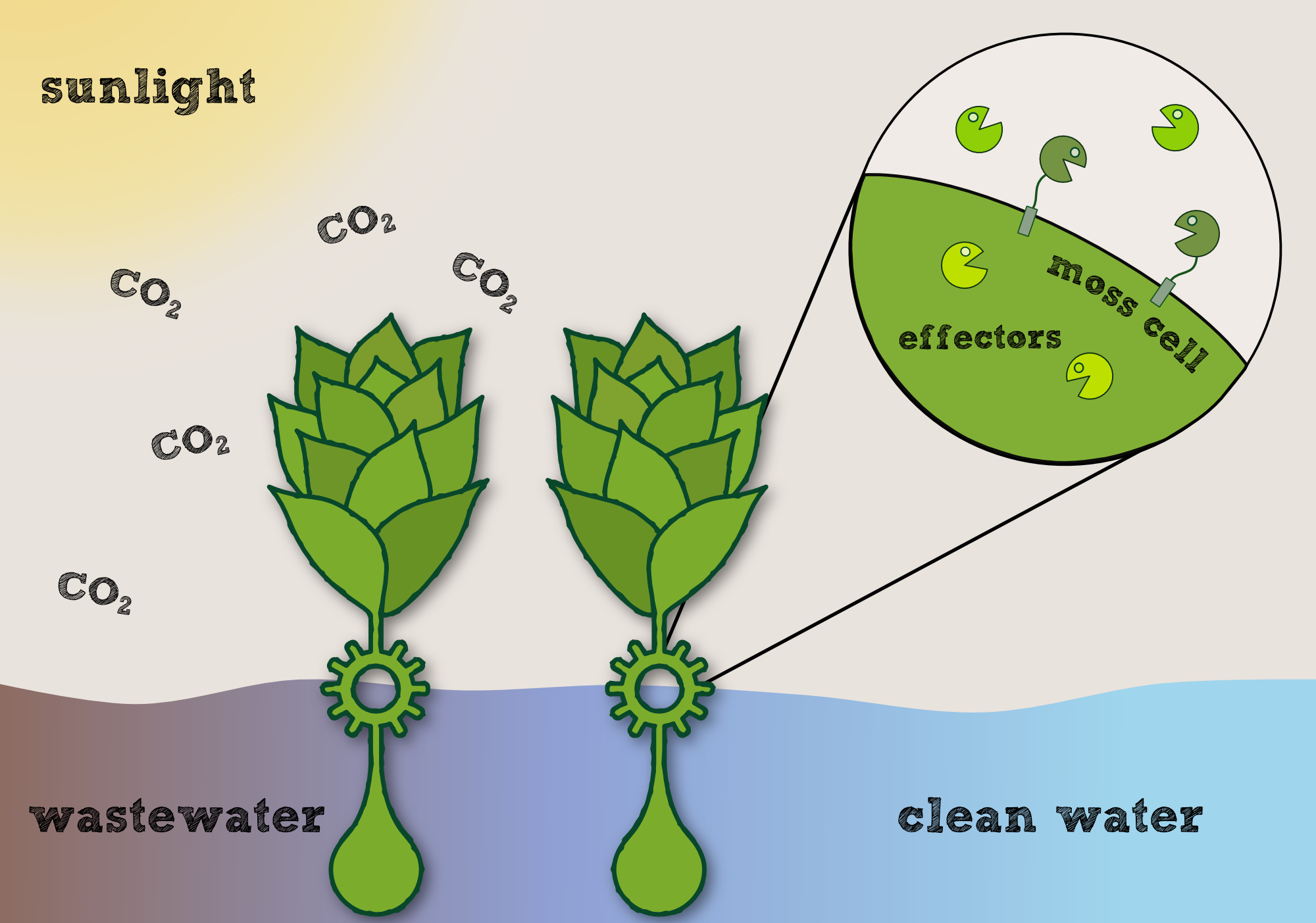Team:TU-Munich
From 2013.igem.org
(→PhyscoFilter – Clean different) |
|||
| Line 30: | Line 30: | ||
== PhyscoFilter – Clean different == | == PhyscoFilter – Clean different == | ||
| - | The contamination of aquatic ecosystems with a multitude of anthropogenic pollutants has been a problem since the industrial revolution. | + | The contamination of aquatic ecosystems with a multitude of anthropogenic pollutants has been a problem since the industrial revolution. Antibiotics, hormones and various noxious substances threaten environmental health and are not effectively removed by conventional waste water treatment. We propose to employ transgenic plants which produce effectors for enzymatic degradation ([https://2013.igem.org/Team:TU-Munich/Project/Biodegradation BioDegradation]) or specific binding ([https://2013.igem.org/Team:TU-Munich/Project/Bioaccumulation BioAccumulation]) of pollutants. The autotrophic, sedentary, aquatic nature of the moss [https://2013.igem.org/Team:TU-Munich/Project/Physcomitrella ''Physcomitrella patens''] makes it an optimal chassis for a self-renewing, low-maintenance and cheap water filter. A light-triggered [https://2013.igem.org/Team:TU-Munich/Project/Killswitch kill switch] prevents unintended environmental spreading by limiting viability to places where the spectrum of sun light is appropriately filtered. Furthermore, we have developed a device to [https://2013.igem.org/Team:TU-Munich/Project/Implementation implement our filter] in an aquatic environment, investigated the application of this new technology and examined its [https://2013.igem.org/Team:TU-Munich/Results/Economics economic feasibility]. Based on our results, PhyscoFilter may become a game-changing approach to improve global water quality in an affordable and sustainable fashion. |
[[File:TUM13_projectidea.png|thumb|center|600px]] | [[File:TUM13_projectidea.png|thumb|center|600px]] | ||
Revision as of 02:34, 5 October 2013
PhyscoFilter – Clean different
The contamination of aquatic ecosystems with a multitude of anthropogenic pollutants has been a problem since the industrial revolution. Antibiotics, hormones and various noxious substances threaten environmental health and are not effectively removed by conventional waste water treatment. We propose to employ transgenic plants which produce effectors for enzymatic degradation (BioDegradation) or specific binding (BioAccumulation) of pollutants. The autotrophic, sedentary, aquatic nature of the moss Physcomitrella patens makes it an optimal chassis for a self-renewing, low-maintenance and cheap water filter. A light-triggered kill switch prevents unintended environmental spreading by limiting viability to places where the spectrum of sun light is appropriately filtered. Furthermore, we have developed a device to implement our filter in an aquatic environment, investigated the application of this new technology and examined its economic feasibility. Based on our results, PhyscoFilter may become a game-changing approach to improve global water quality in an affordable and sustainable fashion.
Sponsors

 "
"























AutoAnnotator:
Follow us:
Address:
iGEM Team TU-Munich
Emil-Erlenmeyer-Forum 5
85354 Freising, Germany
Email: igem@wzw.tum.de
Phone: +49 8161 71-4351